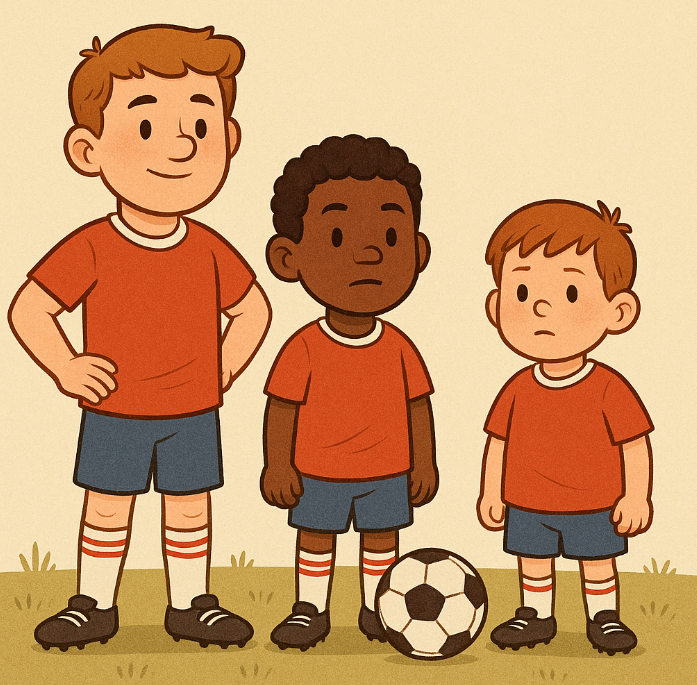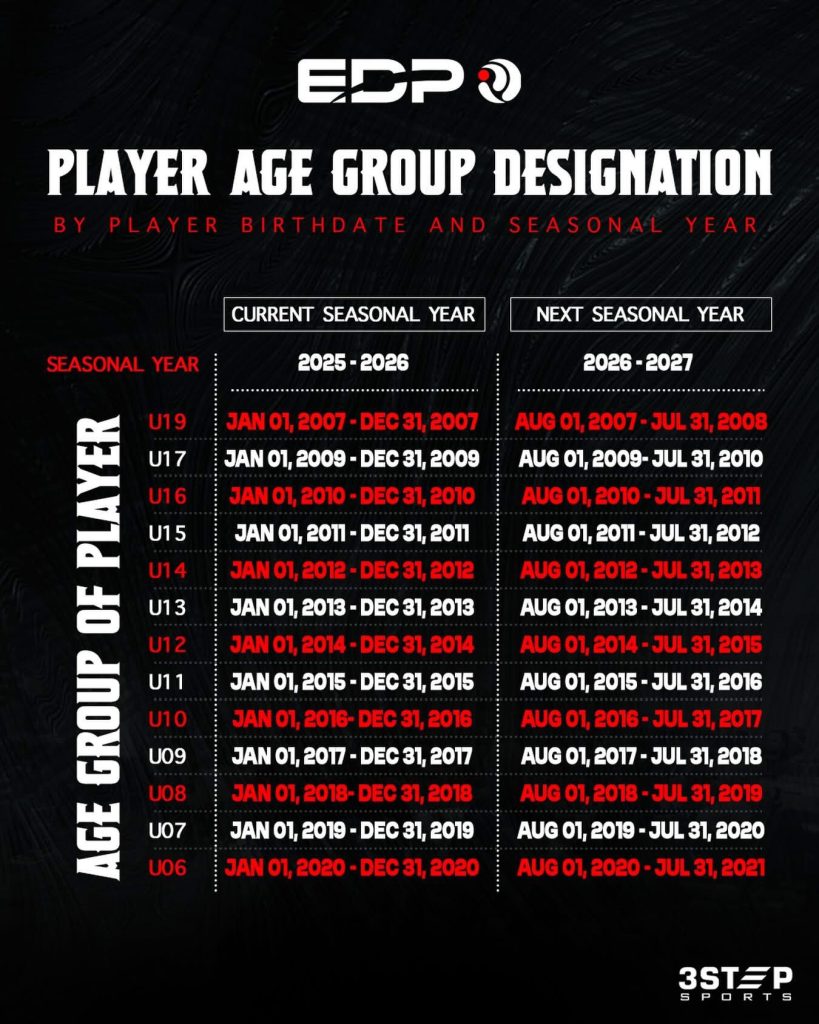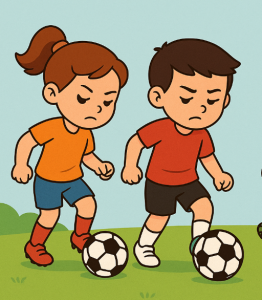
Big Change Coming in Youth Soccer: New Age Groups Start Fall 2026
If you have a child in youth soccer, get ready because starting in Fall 2026, age groups across the America will shift to a new seasonal calendar. This update changes how players are assigned to U-levels (U6, U7, U8, etc.) and is based on your child’s birthdate.
Here’s what’s happening and why it matters.
What’s Changing?
Right now (for the 2025–2026 seasonal year), each age group runs by birth year, from January 1 to December 31. Beginning August 2026, age groups will shift to a new 12-month range:
✔️ August 1 – July 31
That means your child’s soccer “year” will now follow a school-year-style calendar rather than the traditional calendar year.
How This Affects Player Age Groups
Here’s a simple example based on the chart:
Current System (2025–2026)
- U8 = kids born January 1 – December 31, 2018
- U7 = kids born January 1 – December 31, 2019
- U6 = kids born January 1 – December 31, 2020
New System (Starting Fall 2026)
- U8 = kids born August 1, 2018 – July 31, 2019
- U7 = kids born August 1, 2019 – July 31, 2020
- U6 = kids born August 1, 2020 – July 31, 2021
Some kids will effectively repeat an age group, while others may feel like they’re moving up more slowly. This is normal anytime the youth soccer calendar shifts.
Why Make This Change?
There are three main reasons behind the update:
1. Better Alignment With School Grades
This helps coaches form teams that mirror school cohorts, making scheduling and communication smoother.
2. More Consistent Team Building
Kids who play together in school will more often play together in soccer, improving development and social cohesion.
3. Reducing the “Relative Age Effect”
By moving away from strict calendar years, some of the age imbalance (where older kids dominate younger ones in the same group) may soften.
What Parents Should Do Now
1. Check Your Child’s Birthdate Window
Look at the 2026–2027 column on the chart to confirm your child’s new age group.
2. Expect Some Team Adjustments
Both recreation and travel programs will re-sort players beginning Fall 2026.
3. Ask Your Club How They’re Handling the Transition
Some clubs may do orientation sessions, evaluations, or parent Q&As.
The Bottom Line
Starting in Fall 2026, youth soccer age groups will follow an August–July cycle instead of the January–December calendar year. While this may cause some short-term confusion, it will ultimately make team building and player development smoother and more aligned with the academic year.
This Week in Soccer will continue to track updates, answer parent questions, and provide easy breakdowns for each age group as the change gets closer.




